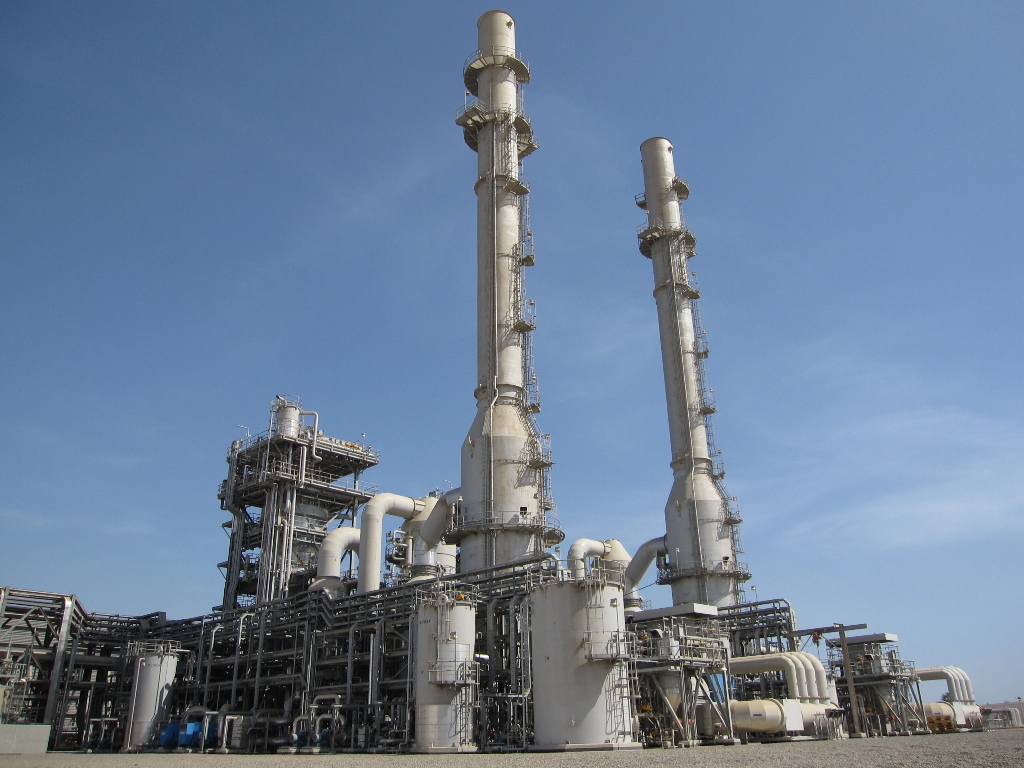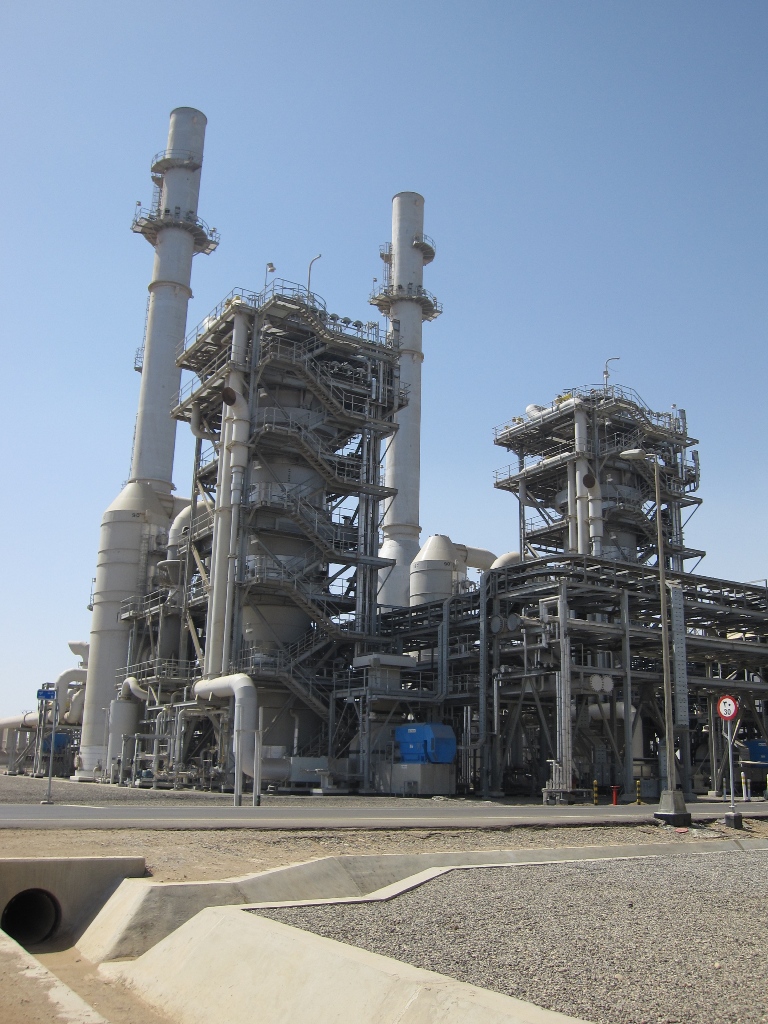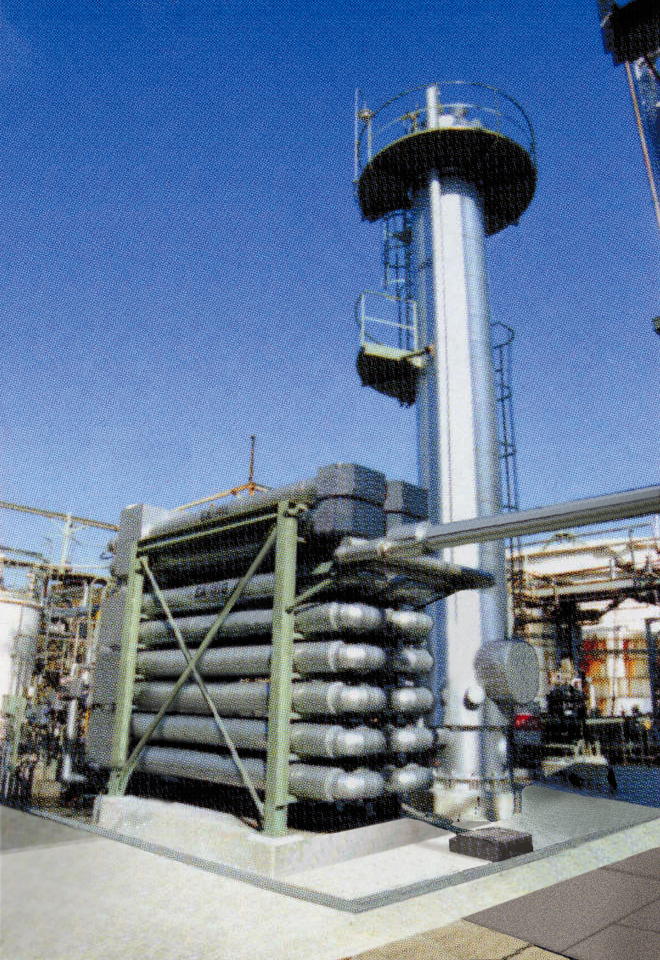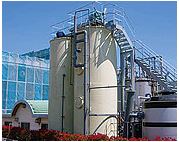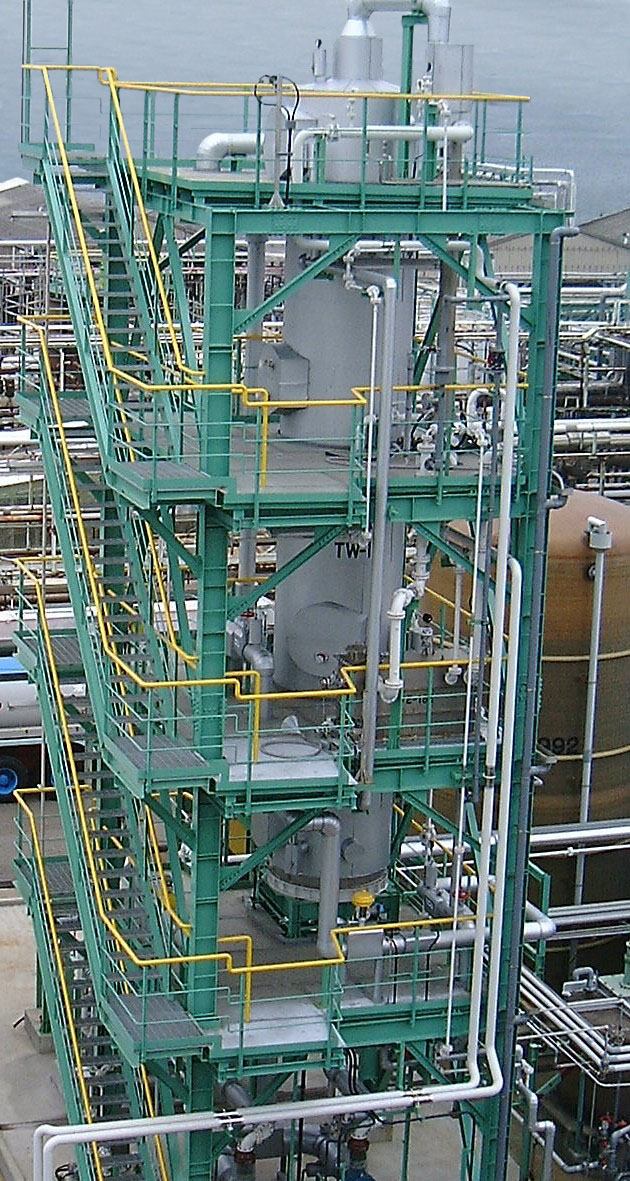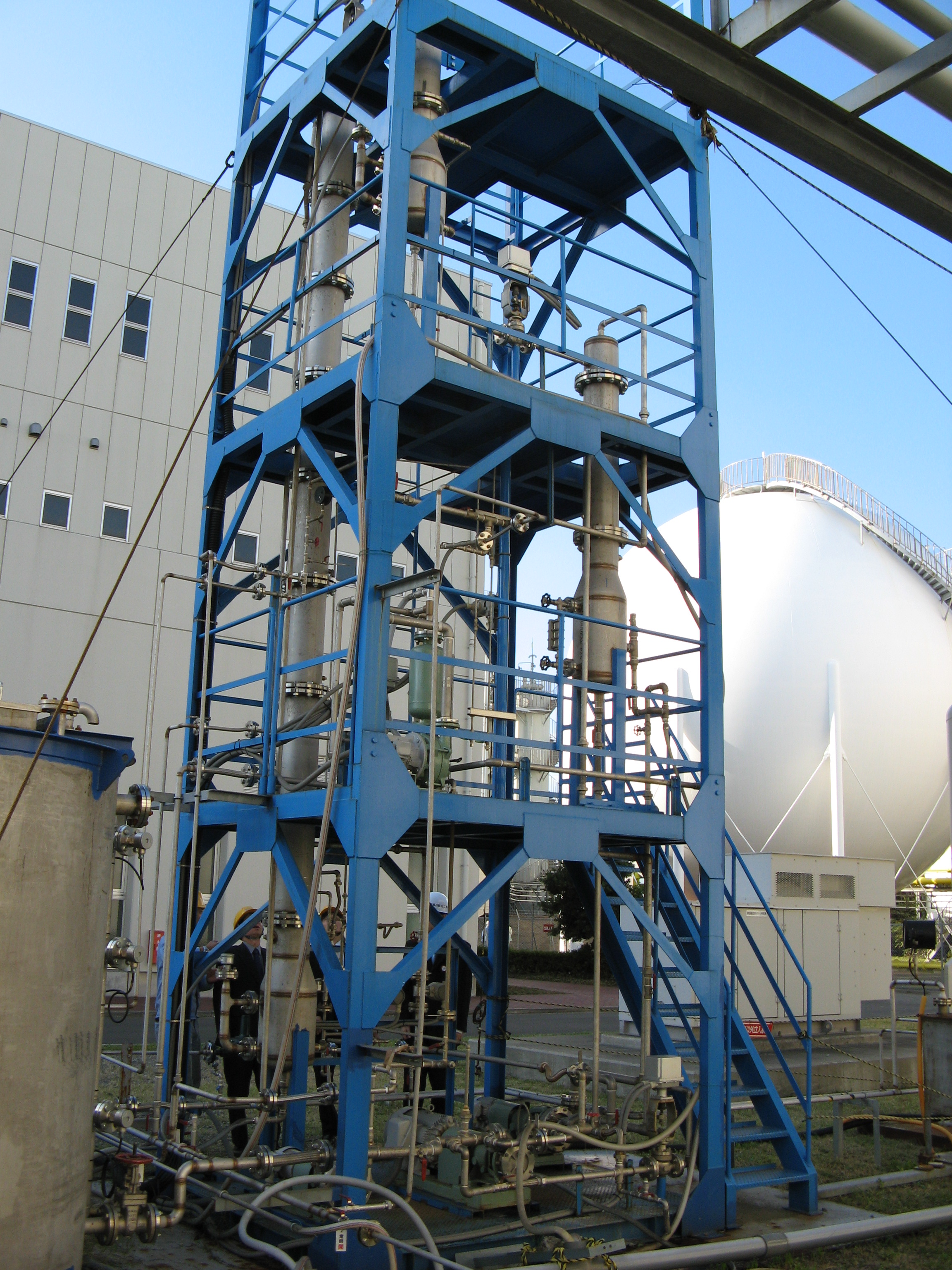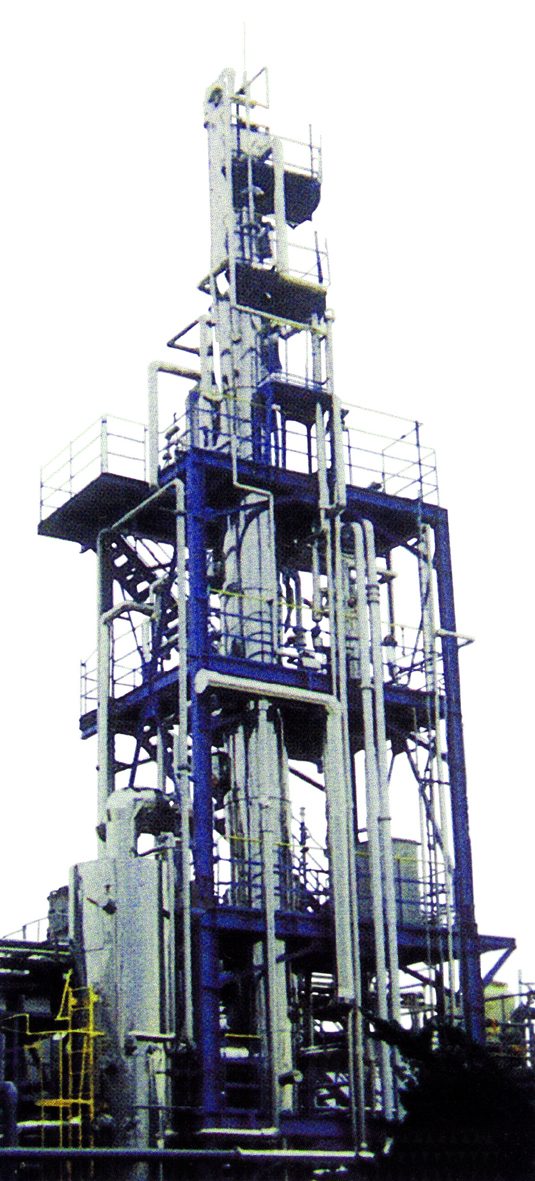What do we do now for precious Earth
「Waste Liquid Treatment」Search Results
- Sorting:
9Items
- Combustion and melting technology
- Concentration, acid, distillation technology
Thermal Oxidizer
- Combustion and melting technology
- Concentration, acid, distillation technology
Submerged Combustion System
Features
・TSKE is enjoying top share in the field.
・Can be reduce the risk of public nuisance.
・The complete decomposition of the organic substances in the liquid waste is achieved regardless of kind or character of the liquid waste.
- Reaction and reforming technology
Catalytic WAO Effluent Water Treatment System
Features
・Combustion is not applied, requiring no fuel, and exhaust gas does not include NOx, SOx, and dioxins.
・No secondary waste such as excess sludge as in biotreatment is generated. The system is applied to wastewater that is difficult to handle through biotreatment.
- Reaction and reforming technology
Biotreatment System/Anaerobic Treatment
Features
High load and high efficiency
?Organic volumetric loading rate: 50 to 80 kg/m??D
?Organic removal rate: 95% (based on tests with artificial glucose water)
Greatly reduces aerobic biotreatment (activated sludge) volume and eliminates activated-sludge bulking at subsequent stage.
(This system is produced by Tsukishima Kikai Co., Ltd.)
- Reaction and reforming technology
Biotreatment System/Aerobic Treatment
Features
・Effectively reduces organic CODs as pretreatment for activated sludge.
・Reduces the treatment volume of activated sludge and excess sludge generated at the subsequent stage.
(This system is produced by Tsukishima Kikai Co., Ltd.)
- Absorption and adsorption technology
BMB Stripper
Distillation effectively removes low level of VOCs in water, but large amount of steam energy is required. With the BMB stripper, steam energy consumption can be reduced by bringing the gas flow closer to the plug flow.
VOCs in water are removed by conventional aeration by releasing them into the air to prevent water contamination. Distillation method is effective for removing small levels of VOCs in water. However, large amounts of steam and energy are required for conventional methods because reducing the amount of steam causes the downward liquid to mix with the upward steam flow, so concentration becomes vertically uniform to the tower, disabling direction control/countercurrent flow of liquid and gas.
However with the BMB stripper, the gas flows closer to the plug flow, which maintains the vertical concentration difference. The liquid flows down in the tower as it contacts with gas and concentration of organic compounds decreases gradually to less than the permissible level, then discharged from the base of the tower. As steam flows upward, concentration of organic compounds increases, allowing for their recovery and reuse. Use of little steam allows increasing the concentration of organic compounds, so solvent phase and aqueous phase can be separated efficiently with a decanter.
- Absorption and adsorption technology
- Concentration, acid, distillation technology
BMB Absorber
Methane gas generated from anaerobic biotreatment is converted into a stable fuel by separating concentrations of CH? and CO? in biogas.
Based on our BMB tower technology, we have developed a system for separating and adsorbing CH4 and CO2, which reduces global warming gases. In activated sludge method, aerobic treatment has been employed widely for treating water quality. However, many disadvantages posed by the aerobic treatment have increased applications of anaerobic treatment with methanogens. Compared to aerobic treatment, surplus sludge is decreased markedly with biological treatment, recovering and utilizing CH4 as a carbon neutral product, saving energy and substantially contributing to prevent global warming.
With conventional systems, the quality of fuel recovered from discharged CH4 is low as its recovery is mixed with CO2. However, the BMB absorber recovers high-quality fuel by effectively recovering CH4 and CO2 separately.
- Concentration, acid, distillation technology
Ammonia Separation and Recovery Process
Ammonia in wastewater is nitrified in the water environment by microorganisms and changes into nitrate-nitrogen or nitrite-nitrogen that adversely affects human beings.
In 2004, the 5th Water Quality Immutable Weight Control was enforced, which started control on nitrogen and phosphorus as substances for eutrophication. The control will be stricter year by year.
We have marketed high-performance packing for many years, and based on our expertise of packing, we have developed and marketed distillation separation equipment. Moreover, to decompose and treat separated ammonia, we provide separation recovery equipment and separation decomposition equipment, incorporating the catalyst technology of Nippon Shokubai.
Ammonia gas separated by the stripper is condensed, and then recovered as ammonia liquid. Moreover, it is possible to produce ammonium sulfate, ammonium chloride, or ammonium bicarbonate.
- Combustion and melting technology
- Concentration, acid, distillation technology
Ammonia Separation and Decomposition Process
Ammonia in wastewater is nitrified in the water environment by microorganisms and changes into nitrate-nitrogen or nitrite-nitrogen that adversely affects human beings.
In 2004, the 5th Water Quality Immutable Weight Control was enforced, which started control on nitrogen and phosphorus as substances for eutrophication. The control will be stricter year by year.
We have marketed high-performance packing for many years, and based on our expertise of packing, we have developed and marketed distillation separation equipment. Moreover, to decompose and treat separated ammonia, we provide separation recovery equipment and separation decomposition equipment, incorporating the catalyst technology of Nippon Shokubai.
The temperature of ammonia gas, separated from the stripper by air diffusion, is increased up to a specified temperature for oxidative decomposition with a catalytic reactor. Heat after oxidative decomposition is used for air diffusion, which reduces running cost.
9 Product found.
If you do not see the product you are looking for, please change your search criteria and search again.


